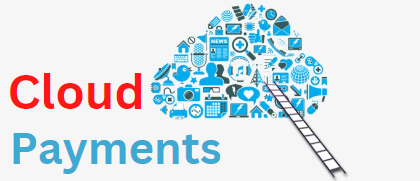Integrating Cloud Payments with Your Existing Systems
In today’s digital age, businesses are constantly seeking ways to streamline their operations and improve efficiency. One area where this is particularly important is in the realm of payments. Traditional payment methods, such as cash or checks, are becoming increasingly outdated and inefficient. As a result, many businesses are turning to cloud payments integration to modernize their payment processes.
Cloud payments integration refers to the process of connecting your existing systems, such as your point-of-sale (POS) system or e-commerce platform, with a cloud-based payment solution. This integration allows for seamless and secure payment processing, as well as improved data management and reporting capabilities.
In this article, we will explore the benefits of integrating cloud payments with your existing systems, the basics of cloud payments, key considerations for choosing a cloud payments provider, a step-by-step guide to integration, common challenges and solutions, best practices for security and compliance, and frequently asked questions.
Benefits of Integrating Cloud Payments with Existing Systems
- Improved Efficiency: Integrating cloud payments with your existing systems eliminates the need for manual data entry and reconciliation. This streamlines the payment process, reduces errors, and saves time for both your employees and customers.
- Enhanced Customer Experience: Cloud payments integration allows for a seamless and convenient payment experience for your customers. They can choose from a variety of payment options, such as credit cards, mobile wallets, or even cryptocurrencies, and complete their transactions quickly and securely.
- Real-Time Reporting and Analytics: Cloud payments solutions provide robust reporting and analytics capabilities. By integrating your existing systems with a cloud-based payment solution, you can gain valuable insights into your sales data, customer behavior, and trends. This information can help you make data-driven decisions and optimize your business operations.
- Scalability and Flexibility: Cloud payments solutions are highly scalable and flexible, allowing you to easily adapt to changing business needs. Whether you are a small business looking to expand or a large enterprise with multiple locations, cloud payments integration can accommodate your growth and provide a consistent payment experience across all channels.
- Cost Savings: By integrating cloud payments with your existing systems, you can reduce costs associated with hardware, software, and maintenance. Cloud-based solutions typically have lower upfront costs and are more cost-effective in the long run.
Understanding the Basics of Cloud Payments
Before diving into the integration process, it is important to have a basic understanding of how cloud payments work. Cloud payments refer to the use of cloud-based technology to process and manage payments. Instead of relying on physical infrastructure, such as on-premises servers, cloud payments leverage the power of the internet to securely transmit payment data.
Cloud payments typically involve three main components: the payment gateway, the payment processor, and the merchant account. The payment gateway acts as a bridge between your systems and the payment processor, securely transmitting payment data and authorizing transactions. The payment processor, also known as the acquirer, is responsible for processing the payment and transferring funds from the customer’s account to the merchant’s account. The merchant account is where the funds are deposited after a successful transaction.
Key Considerations for Choosing a Cloud Payments Provider
When selecting a cloud payments provider, there are several key considerations to keep in mind:
- Security: Security should be a top priority when choosing a cloud payments provider. Look for providers that offer robust security measures, such as encryption, tokenization, and fraud detection. Additionally, ensure that the provider is compliant with industry standards, such as the Payment Card Industry Data Security Standard (PCI DSS).
- Integration Capabilities: Consider the compatibility of the cloud payments solution with your existing systems. Look for providers that offer seamless integration with popular POS systems, e-commerce platforms, and accounting software.
- Payment Options: Evaluate the payment options supported by the cloud payments provider. Ensure that they support a wide range of payment methods, including credit cards, debit cards, mobile wallets, and alternative payment methods.
- Pricing Structure: Understand the pricing structure of the cloud payments provider. Look for transparent pricing with no hidden fees. Consider factors such as transaction fees, monthly fees, and any additional charges for value-added services.
- Customer Support: Reliable customer support is crucial when it comes to cloud payments integration. Look for providers that offer 24/7 customer support and have a reputation for excellent service.
Step-by-Step Guide to Integrating Cloud Payments with Your Existing Systems
Now that you understand the benefits of integrating cloud payments and have considered the key factors in choosing a provider, let’s dive into the step-by-step process of integration:
- Assess Your Current Systems: Start by assessing your existing systems, such as your POS system or e-commerce platform. Identify the specific functionalities you require from a cloud payments solution and any limitations or constraints you may have.
- Research and Select a Provider: Based on your requirements, research and select a cloud payments provider that best fits your needs. Consider factors such as security, integration capabilities, payment options, pricing, and customer support.
- Set Up a Merchant Account: Once you have chosen a provider, you will need to set up a merchant account. This account will be used to receive funds from customer transactions. Follow the provider’s instructions to complete the account setup process.
- Configure Integration Settings: Next, configure the integration settings between your existing systems and the cloud payments solution. This may involve installing plugins or APIs provided by the provider. Follow the integration documentation provided by the provider to ensure a smooth setup.
- Test the Integration: Before going live, thoroughly test the integration to ensure that payments are being processed correctly and data is being transmitted accurately. Test various payment scenarios, such as successful transactions, declined transactions, and refunds, to ensure that all functionalities are working as expected.
- Train Your Staff: Once the integration is tested and working properly, train your staff on how to use the new payment system. Provide them with clear instructions on how to process payments, handle refunds, and troubleshoot any issues that may arise.
- Go Live and Monitor Performance: After training your staff, you are ready to go live with the integrated cloud payments solution. Monitor the performance of the system closely during the initial days to ensure that everything is functioning smoothly. Address any issues or concerns promptly to minimize disruptions to your business operations.
Common Challenges and Solutions in Cloud Payments Integration
While integrating cloud payments with your existing systems offers numerous benefits, it can also present some challenges. Here are some common challenges and their solutions:
- Compatibility Issues: One of the main challenges in integration is ensuring compatibility between your existing systems and the cloud payments solution. To overcome this challenge, choose a provider that offers seamless integration with your specific systems. Work closely with the provider’s support team to address any compatibility issues that may arise.
- Data Synchronization: Another challenge is ensuring that data is synchronized accurately between your systems and the cloud payments solution. This is particularly important for inventory management and reporting purposes. To address this challenge, establish clear data synchronization processes and regularly reconcile data between systems.
- Training and Adoption: Integrating a new payment system requires training your staff on how to use it effectively. Lack of proper training can lead to errors and inefficiencies. To overcome this challenge, invest in comprehensive training programs and provide ongoing support to ensure that your staff is comfortable using the new system.
- Security Concerns: Security is a major concern when it comes to cloud payments integration. To address this challenge, choose a provider that offers robust security measures, such as encryption and tokenization. Regularly monitor and update your security protocols to stay ahead of potential threats.
Best Practices for Ensuring Security and Compliance in Cloud Payments Integration
When integrating cloud payments with your existing systems, it is crucial to prioritize security and compliance. Here are some best practices to follow:
- Choose a PCI DSS Compliant Provider: Ensure that your cloud payments provider is compliant with the Payment Card Industry Data Security Standard (PCI DSS). This standard sets requirements for securely handling cardholder data and protecting against data breaches.
- Implement Encryption and Tokenization: Encryption and tokenization are essential security measures for protecting sensitive payment data. Encryption ensures that data is securely transmitted between systems, while tokenization replaces sensitive data with unique tokens, reducing the risk of data theft.
- Regularly Update Security Protocols: Stay up to date with the latest security protocols and best practices. Regularly update your systems, software, and security measures to protect against emerging threats.
- Monitor and Analyze Transactions: Implement real-time transaction monitoring and analysis to detect and prevent fraudulent activities. Set up alerts for suspicious transactions and investigate any anomalies promptly.
- Educate Your Staff: Train your staff on security best practices, such as password hygiene, recognizing phishing attempts, and handling customer data securely. Regularly remind them of the importance of security and provide ongoing training to stay vigilant against potential threats.
Frequently Asked Questions (FAQs) about Cloud Payments Integration
Q.1: What is cloud payments integration?
Answer: Cloud payments integration refers to the process of connecting your existing systems with a cloud-based payment solution to streamline payment processing and improve efficiency.
Q.2: What are the benefits of integrating cloud payments with existing systems?
Answer: Integrating cloud payments offers benefits such as improved efficiency, enhanced customer experience, real-time reporting and analytics, scalability and flexibility, and cost savings.
Q.3: How does cloud payments work?
Answer: Cloud payments involve three main components: the payment gateway, the payment processor, and the merchant account. The payment gateway securely transmits payment data, the payment processor processes the payment, and the merchant account receives the funds.
Q.4: What should I consider when choosing a cloud payments provider?
Answer: Key considerations include security, integration capabilities, payment options, pricing structure, and customer support.
Q.5: What is the step-by-step process of integrating cloud payments with existing systems?
Answer: The process involves assessing your current systems, selecting a provider, setting up a merchant account, configuring integration settings, testing the integration, training your staff, and going live.
Conclusion
Integrating cloud payments with your existing systems can revolutionize your payment processes and improve overall efficiency. By seamlessly connecting your systems with a cloud-based payment solution, you can enhance the customer experience, gain valuable insights through real-time reporting and analytics, and ensure scalability and flexibility for future growth.
However, it is important to carefully consider the key factors when choosing a cloud payments provider and follow best practices for security and compliance. By doing so, you can unlock the full potential of cloud payments integration and take your business to new heights in the digital era.











